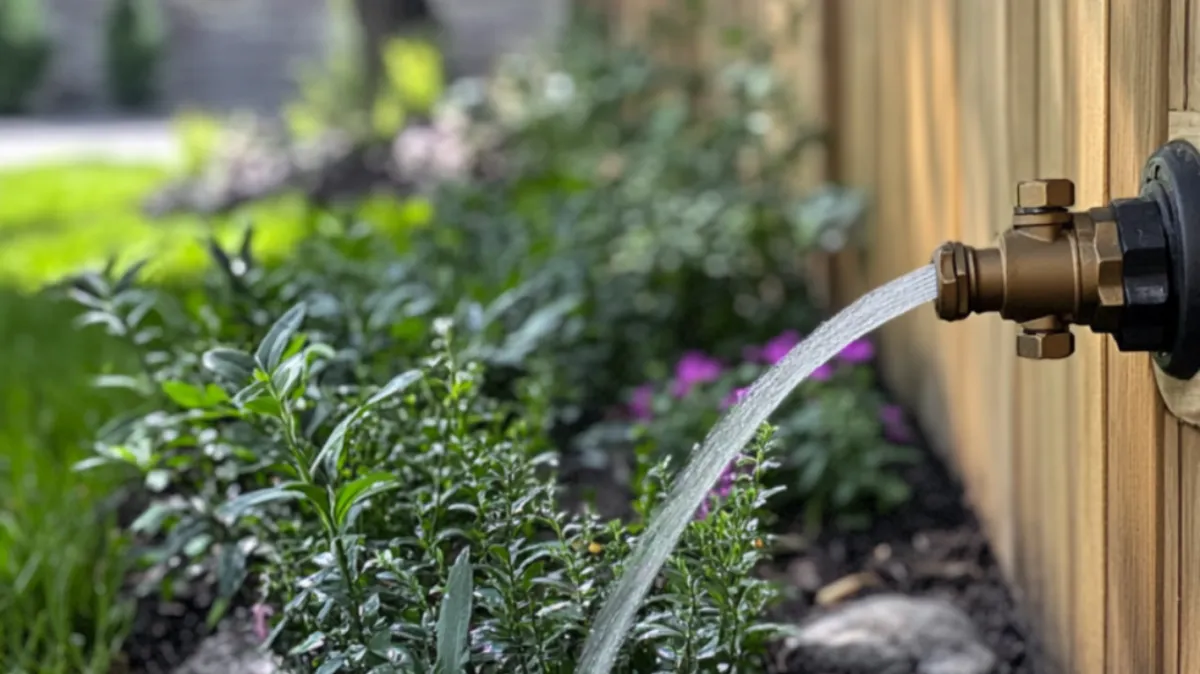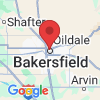
Rosedale Plumbing Journal
By The Plumbing Doc

Begin Summer with a Plumbing Check
Check Outdoor Faucets and Hose Bibs
Summer means outdoor living—watering gardens, washing cars, filling kiddie pools, and more. That makes your outdoor faucets and hose bibs some of the most frequently used plumbing features this time of year. Starting your summer plumbing prep here helps you avoid water waste, pressure issues, and surprise leaks when you need water most. Here’s a step-by-step checklist to inspect your outdoor faucets and hose bibs:
1. Turn on the faucet and assess the water flow.
A weak stream or inconsistent pressure may signal sediment buildup, partially closed shut-off valves, or internal damage.
Compare flow from each outdoor faucet to detect isolated issues.
2. Watch for leaks during and after operation.
Leaks while the water is running may stem from loose connections or damaged washers.
If water continues to drip after shutting the faucet off, you may have a worn-out valve or deteriorated rubber seal inside.
3. Check hose connections and threads.
Ensure the hose is securely fastened and not leaking at the base or connection point.
Look for signs of rust, corrosion, or thread damage on the spout.
4. Inspect surrounding areas.
Examine the wall or siding around the hose bib for signs of moisture or mold, which could indicate a hidden leak inside the wall.
Check for soft soil or puddles forming beneath the faucet—this may signal underground pipe issues.
Get Your Irrigation System Summer-Ready
In our region, summer landscaping relies heavily on well-functioning irrigation systems—whether you're using sprinklers, soaker hoses, or drip lines. A quick tune-up before peak heat hits ensures your plants get the hydration they need without wasting water or overworking your system. Here's how to inspect and prep your irrigation system for summer:
1. Run a Complete Irrigation Cycle
Turn on the full system manually and walk your yard as each zone operates.
Check for consistent spray, even coverage, and proper pressure in all areas.
2. Inspect Each Sprinkler Head
Ensure all heads pop up and rotate properly.
Clean off dirt, grass clippings, or mulch blocking the nozzles.
Look for misaligned heads that spray onto sidewalks, driveways, or walls instead of your lawn.
3. Check for Leaks or Water Waste
Watch for pooling water, bubbling around sprinkler heads, or soggy soil—these could signal underground leaks or cracked pipes.
Check drip lines and connections for drips or splits.
Listen for hissing or air escaping from valves, which may indicate pressure issues or worn seals.
4. Adjust Timers and Scheduling
Update your watering schedule to align with current weather and daylight patterns.
Set early morning or evening watering times to reduce evaporation and maximize efficiency.
If your landscape layout has changed since last summer, reprogram zones accordingly.
Prevent Drain Clogs and Backups
Summer might mean more barbecues, beach days, and family gatherings—but it also brings a unique set of challenges to your home’s plumbing system. From greasy grill cleanup to rinsing off sunscreen and sand, your drains can get overwhelmed if not properly maintained. Here’s how to prevent summertime clogs and backups:
1. Flush Your Drains Regularly
Pour hot water mixed with vinegar or baking soda down your kitchen and bathroom drains once a week.
This natural method helps dissolve soap scum, grease, and light debris buildup without harming your pipes.
For stubborn buildup, consider a professional hydro jetting service to deep-clean the lines safely.
2. Install Drain Strainers and Screens
Place strainers or mesh guards in kitchen sinks, bathroom sinks, and tubs.
These simple tools catch hair, food scraps, and soap residue before they enter your plumbing system.
Clean the strainers regularly to prevent slow drainage and foul odors.
3. Keep Grease and Food Waste Out of the Sink
Never pour cooking grease, oils, or fatty leftovers down the drain—they solidify and cause major blockages.
Instead, collect grease in a container and dispose of it in the trash.
Use paper towels to wipe down greasy pans before washing them in the sink.
Test Your Water Heater
Even as temperatures rise outside, your water heater continues to work hard indoors—especially with summer’s increased demand. Think extra showers after hiking or swimming, more laundry from outdoor play, and frequent dishwashing after cookouts. Making sure your water heater is functioning efficiently now can prevent discomfort and energy waste all summer long.Here's how to prep your water heater for the season:
1. Flush the Tank to Remove Sediment
Over time, minerals and debris settle at the bottom of your water heater tank, reducing efficiency and causing uneven heating.
Flushing the tank clears out this sediment, which helps your unit heat faster and use less energy.
Ideally, flush the tank once or twice a year—or contact The Plumbing Doc for a professional flush if it’s been a while.
2. Check the Temperature Setting
Set the thermostat to 120°F—this provides hot water for daily use without scalding risks or excess energy consumption.
Water that’s too hot can increase utility bills and pose a safety hazard, especially for kids and older adults.
If you notice inconsistent temperatures, the thermostat or heating element may need service.
3. Inspect for Leaks and Corrosion
Look around the base of the tank and along fittings for moisture, rust stains, or signs of corrosion.
Listen for unusual popping or rumbling sounds, which may indicate a buildup of sediment or an aging element.
If you spot rust on the tank exterior or near the pressure relief valve, it’s time to call a professional to evaluate whether repair or replacement is needed.
Don’t wait for a midsummer plumbing disaster! Schedule your summer plumbing tune-up with The Plumbing Doc today and start your season with confidence.

Schedule a Professional Inspection
Ready to schedule a professional inspection? Contact us today.

